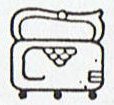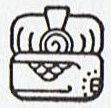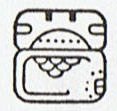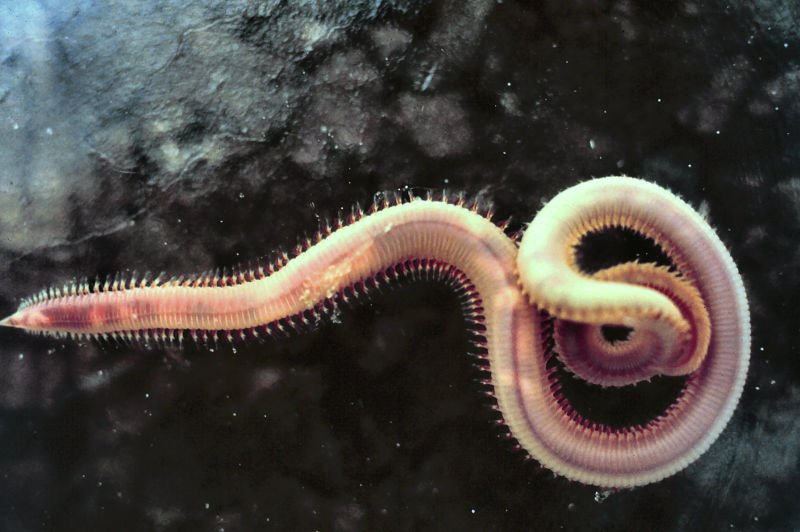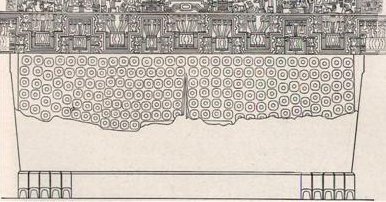10. When the G tablet was read by the professionals they probably began at left bottom on side a and read towards right and upwards at the end of the line, then easily reading the glyphs in line a2 from right to left although they were upside down compared to those in line a1. At the end of the side, after 7 'curves' and at top left at the upside down Ga8-30, the tablet was turned to continue reading on side b in the same way - beginning at bottom left with line b1 etc. Obviously line b1 should be read as a continuation of line a8 since haś poro ure in Gb1-1 is a more evolved version of the unusual Ga8-16 (11 days earlier):
Maybe what is depicted is a 'watersnake' (with marvelously coloured skin), and maybe the time is July (the first month beyond winter solstice):
If so, then side b could begin where a new Sun is born and the reading go upwards to be in harmony with his climbing. The previous reading upwards from the bottom to the top of side a could also correspond to the climb (kake) of the Sun, but presumably north of the equator. Ga8-22 has ragi at the top and if my argumentation is correct then the drawing could express how the tablet soon has to be turned upside down, i.e. the 'day' (the front side) will be turned into 'night' (the back side), expressed by the ragi sign. Mangareva is not far from Easter Island and the word pororo was probably known on Easter Island. When Metoro said poporo he may have thought of pororo. My interpretation of po-poro as expressing an idea comparable to day-break does not exclude other meanings. July is in a way a time of 'day-break' because south of the equator the new solar year is beginning here, after the winter solstice in June. Hua poporo could be 'the grapes' of July. We should remember the Mayan sign for rain clouds (cfr at Vero):
In Samoa the corresponding month name palolo-mua ought to mean the 1st month of the palolo season: "... In Tahiti the bread-fruit can be gathered for seven months, for the other five there is none: for about two months before and after the southern solstice it is very scarce ... The recurring scarcity of bread-fruit shewed the changes in the course of the year, but the Pleiades afforded a surer limit. Here I wish to quote from my earlier outline of a glyph dictionary: '... Barthel informs us that the Maori singers in New Zealand, where the breadfruit did not grow, 'translated' kuru (= breadfruit) in their old songs - from the times when their forefathers lived in a warmer climate - into poporo. He points out that in the Marquesas they counted the fruits from the breadfruit trees in fours, perhaps thereby explaining the four 'berries' in this type of glyph. The breadfruit did not grow on Easter Island but the berries of Solanum nigrum were eaten in times of famine. Barthel compares with the word koporo on Mangareva. The poor crop of breadfruits at the end of the harvest season was called mei-koporo, where mei stood for breadfruit. On other islands breadfruit was called kuru, except in the Marquesas which also used the word mei. Koporo was a species of nightshade ...' In Samoa one authority gives the wet season, ending in April, and the dry season, which comes to an end with the palolo fishing in October; another vaipalolo the palolo or wet season from October to March, and toe lau, when the regular trade-winds blow, embracing the other months; a third the season of fine weather - in which however much rain falls in some localities - and the stormy season, when it rains heavily ..." (Martin P. Nilsson, Primitive Time-Reckoning.)
"The palolo worm or Samoan palolo worm (Palola viridis) is a species of invertebrate in the Eunicidae family ..." (Wikipedia) The palolo worm could also have been in the mind of Metoro. It is like a water snake. When the season of 'the feathered serpent' (maybe depicted as haś poro) is over the water snake (perhaps a name for Hydra) will take over. Both are the complementary aspects of the Rain God we can imagine.
Sun down in the 'water' could be referred to in Gb1-3:
Here Rogo has no head, and we remember that '...The duckler, to which all the credit was due, was left with the head, which was black. But it said it was good enough for an old bird ...' Instead of a head there are signs which could allude to waves, and the 'hole' in his body is probably a sign of 'Sun on the back side' (cfr the sign close to Saturn in the Babylonian picture). This sign also occurs around the skirt of Pachamama:
Water accumulates at bottom and below the midline of Pachamama these symbols probably are meant to indicate water, but their arrangement and their number (94 + 83 = 177) implies that each of them probably represents a day. Thus this type of symbol can also represent Sun beyond midsummer. |
||||||||||||||||||||||||||||||||||||||||||||||||||








